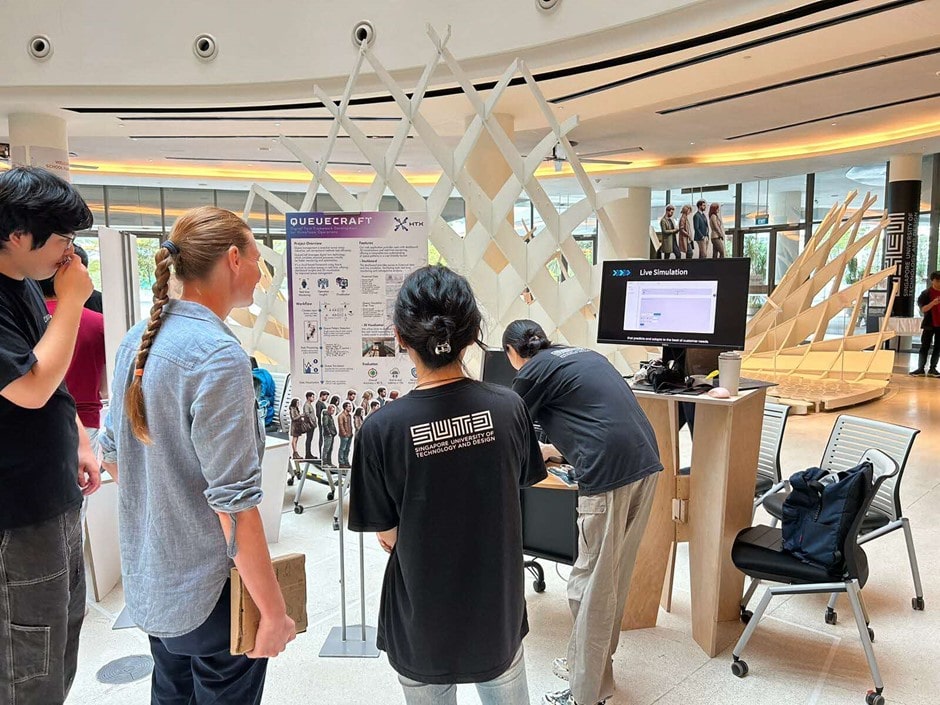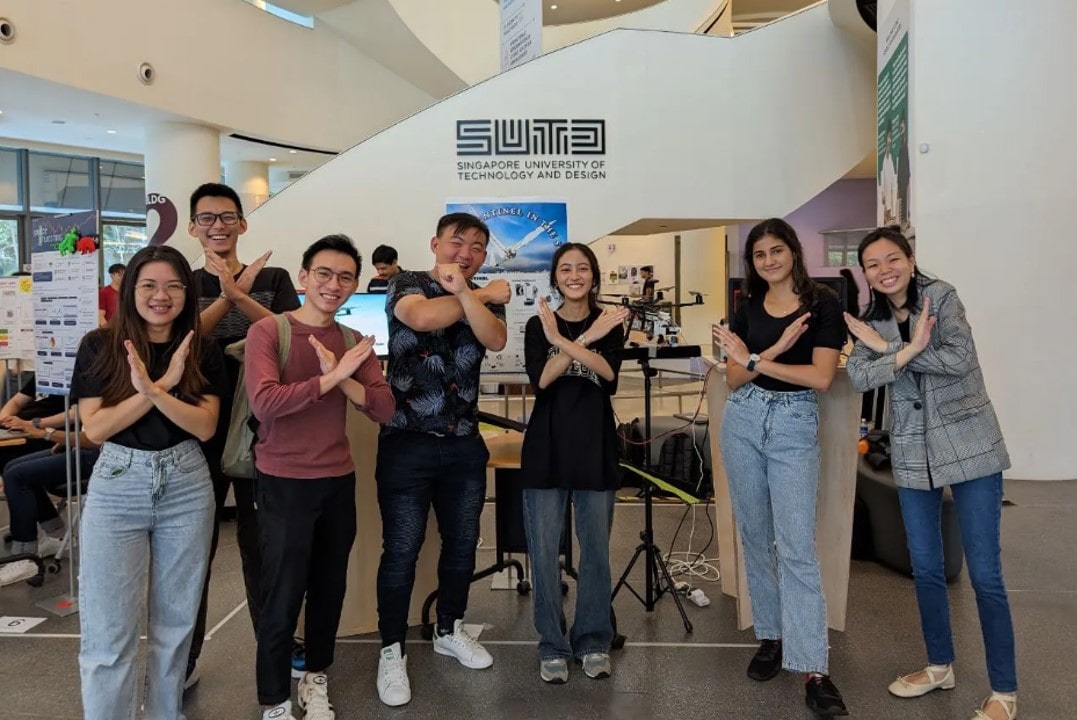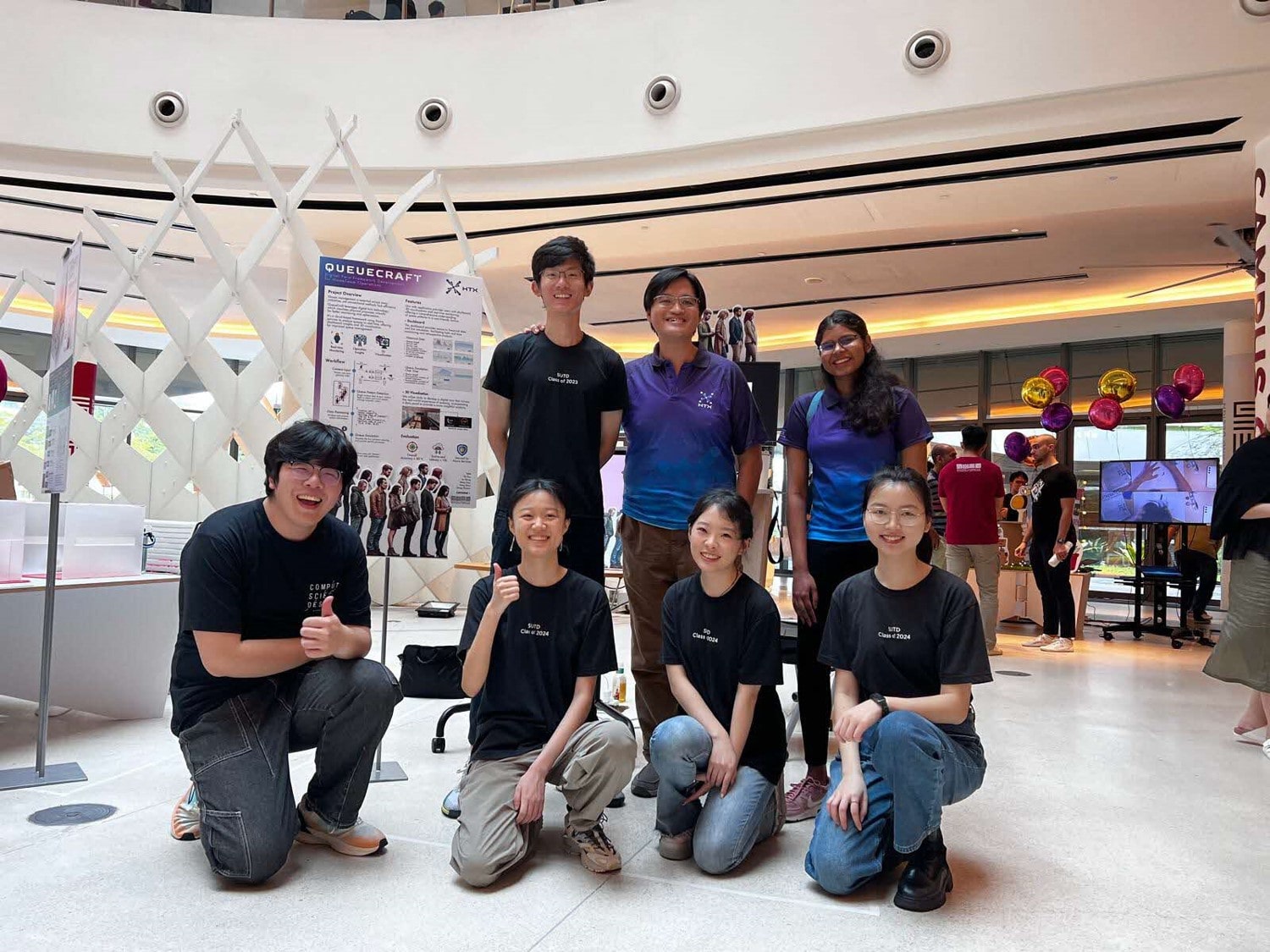 The QueueCraft team demonstrating their project to curious visitors. (Photo: HTX)
The QueueCraft team demonstrating their project to curious visitors. (Photo: HTX)
It’s a bird, it’s a plane, it’s a … bird drone? If you ever come across a drone that looks and flies like a bird, chances are your eyes aren’t playing tricks on you. Such drones, often called “flapping wing drones”, have great potential for use in surveillance operations as they are more discreet than noisier conventional quadcopter drones.
The bird-inspired design, however, does come with a big drawback – unstable footage due to the flapping wings.
Under the mentorship of HTX engineers from the Robotics, Automation & Unmanned Systems (RAUS) Centre of Expertise (CoE), students from the Singapore University of Technology and Design (SUTD) leveraged the power of data to devise a solution to this problem as part of their Capstone project.
Titled Silent Sentinel in the Sky, the project involved the development of a gimbal system that stabilises the camera. Further stabilisation was provided by object tracking and video stabilisation software.
See how Silent Sentinel works:
 The Silent Sentinel team. From left to right: Yuliati, Matthew Yee Zhang Yuan, Joseph Wong (HTX mentor), Zachary Wu Xuan, Nur Thohirah Bte Sani, Saakshi Vinod Saraf and Glenda Teo Wei Ting. Elvis Kason Lin was not in the photo. (Photo: HTX)
The Silent Sentinel team. From left to right: Yuliati, Matthew Yee Zhang Yuan, Joseph Wong (HTX mentor), Zachary Wu Xuan, Nur Thohirah Bte Sani, Saakshi Vinod Saraf and Glenda Teo Wei Ting. Elvis Kason Lin was not in the photo. (Photo: HTX)
As it turns out, the work of the Silent Sentinel team will live on after the Capstone project.
RAUS engineer Joseph Wong, who mentored the Silent Sentinel team, shared that his CoE will build on the video analytics developed for the project, in particular the ability to detect and track objects in video feeds.
“I must commend the students for taking on this challenging problem with great tenacity. It was truly a pleasure to be working with such talented and driven youths,” he said.
Another SUTD Capstone project that drew on the power of data to tackle issues faced by the Home Team was QueueCraft. This system uses digital twinning technology to build an optimised queue management system for the Home Team.
The QueueCraft team was mentored by data scientists from HTX’s xData division.
A digital twin is a software simulation of a real-life object. QueueCraft creates digital twins of queues at Home Team offices which are continually updated with real-time data. With the insights provided by QueueCraft, Home Team officers can study how they can improve queue management and provide better services. The following video shows how QueueCraft works:
 The QueueCraft team. Back row, from left to right: Su Chang, Huang Shisheng (HTX mentor), and Niveditha Nerella (HTX mentor). Front row, from left to right: Meng Fanyi, Wang Zhuoran, Ge Ziyu, and Wang Shiyu. (Photo: HTX)
The QueueCraft team. Back row, from left to right: Su Chang, Huang Shisheng (HTX mentor), and Niveditha Nerella (HTX mentor). Front row, from left to right: Meng Fanyi, Wang Zhuoran, Ge Ziyu, and Wang Shiyu. (Photo: HTX)
Senior Data Scientist Huang Shisheng, who was one of the mentors, shared that xData will be following up on the work done on QueueCraft, as applying digital twinning technology to Home Team operations is one of xData’s major lines of research.
“Mentoring the SUTD Capstone team was a great experience as we got to be a part of their journey while solving a problem relevant to us!” said Shisheng.
The SUTD students also lauded their collaboration with HTX.
“The mentorship and support from HTX were crucial to our success. Their expertise and insights not only accelerated our progress but also imbued our team with the confidence and skills necessary to navigate complex challenges and seize new opportunities,” shared QueueCraft team member Wang Zhuoran.

